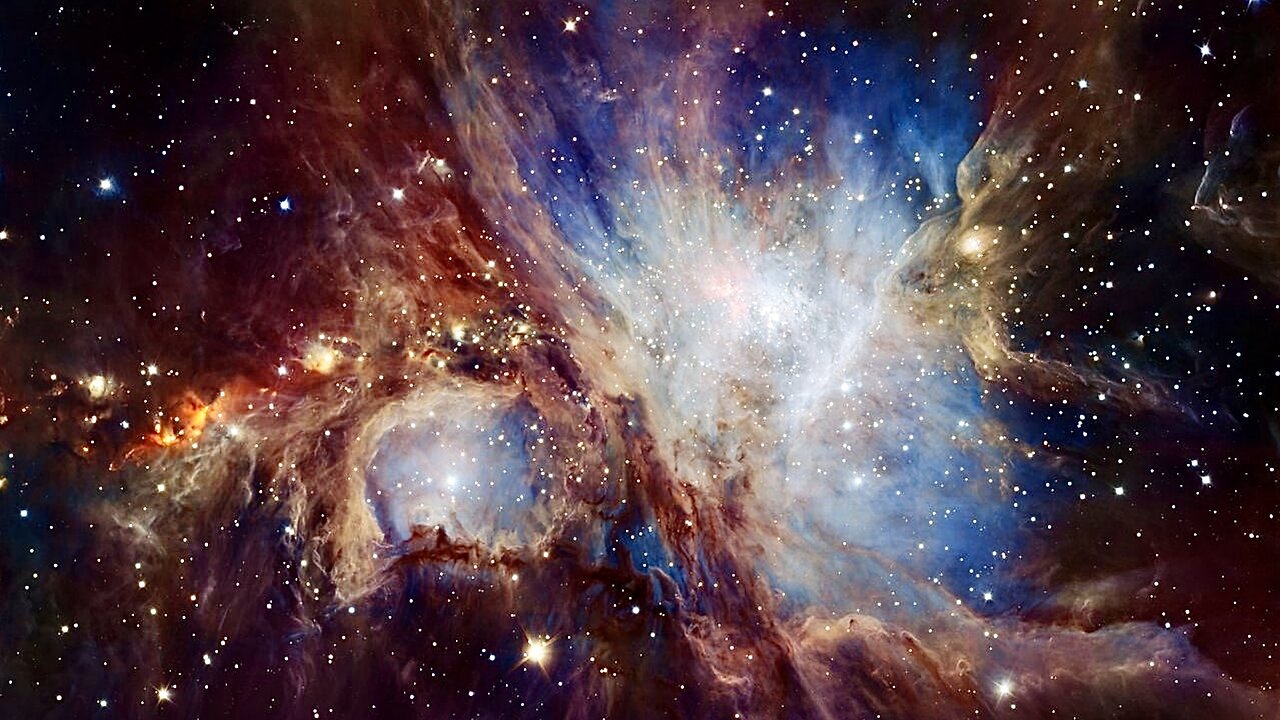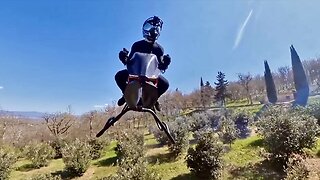Premium Only Content

Incredible Anatomy of the Orion Nebula ~ NASA and ESA Images
A fly-through of the Orion Nebula, based on images captured by NASA and ESA (European Space Agency) telescopes The image shows infrared light, or wavelengths that the human eye cannot see. Stars radiate little or no light in these wavelengths, so the image shows only dust.
The blue light indicates warm dust, heated by radiation from large, bright stars that can release up to one million times more light than our Sun. All that radiation breaks apart dust grains and carves out cavities, like the two blue “bubbles” in the image. Much of the remaining dust is then swept away by winds from the stars or when the stars die explosive deaths as supernovae.
Around the edge of the two cavernous regions, the dust that appears green is slightly cooler. Red indicates cold dust that reaches temperatures of about minus 440 Fahrenheit (minus 260 Celsius). A cold ribbon of dust starts near the bottom right of the image and threads throughout the nebula. Red and orange filaments like these are where dust condenses and forms new stars. Over time, these filaments may produce new giant stars that will once again reshape the region.
These images were captured by the now-retired Herschel Space Telescope, an ESA observatory, NASA’s retired Spitzer Space Telescope, and NASA’s Wide-Field Infrared Survey Explorer (WISE), which now operates under the moniker NEOWISE. Spitzer and WISE were both managed by NASA’s Jet Propulsion Laboratory, a division of Caltech, in Southern California.
Credit: NASA/JPL-Caltech
Music: Bottom of the Sea (Instrumental Version) by Dhruva Aliman - Amazon- https://amzn.to/3dgKA52 - Apple - https://music.apple.com/us/artist/dhruva-aliman/363563637 - Spotify - https://open.spotify.com/artist/5XiFCr9iBKE6Cupltgnlet - Bandcamp - https://dhruvaaliman.bandcamp.com/album/hard-to-get-along - http://www.dhruvaaliman.com/
#space #universe #cosmos
-
 3:39
3:39
Knowledge Land
2 months agoYour Personal Flying Scooter - Airbike Is Here - Volonaut
29 -
 56:48
56:48
The HotSeat
14 hours agoI'm NOT Sorry! Guns Aren’t the Problem—Godless Culture Is
32.3K30 -
 9:43
9:43
The Pascal Show
15 hours ago $0.52 earnedWHOA! Annunciation School Sh**ter Identified... Heartbreaking & Insane
4.98K2 -
 22:42
22:42
Liberty Hangout
10 hours agoCollege Democrats Say Gangs Are GOOD!
78.3K69 -
 2:14:50
2:14:50
Badlands Media
15 hours agoBadlands Media Fantasy Football Live Draft
46.4K1 -
 2:12:29
2:12:29
Inverted World Live
9 hours agoWe Are Time Travelers | Ep. 100
88.7K13 -
 2:57:09
2:57:09
TimcastIRL
9 hours agoCorporate Press Refuses To Mention Minneapolis Shooter Was Trans | Timcast IRL
196K108 -
 5:26:57
5:26:57
Akademiks
9 hours agoWar in RAT-LANTA. Young Thug vs Gunna vs Ralo vs YSL MONDO. Who Will Le Bebe Pick. FINAL CRASHOUT!
62.2K6 -
 1:02:24
1:02:24
Man in America
12 hours agoThe Final Battle: Nanotech, Transhumanism & the War for Your Soul w/ Dr. Ed Group
50.6K7 -
 39:56
39:56
Sarah Westall
7 hours agoUpcoming World Wide Economic Collapse/Deep Recession & What the Big Money is Doing w/ Ed Dowd
48.5K5